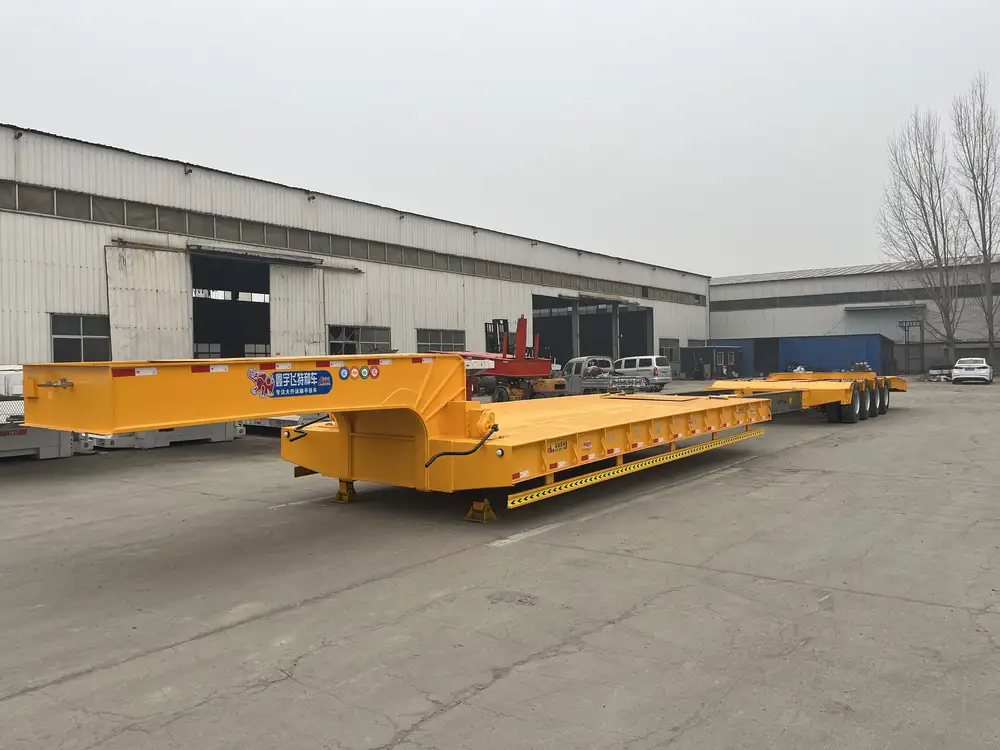Loading a curtain side trailer effectively is crucial for ensuring the safety of both the cargo and the transportation process. Understanding the nuances of this loading method can make a considerable difference in driver efficiency, cargo stability, and compliance with safety regulations. This comprehensive guide will delve into best practices, loading techniques, and safety measures that every logistics professional should know.
Understanding Curtain Side Trailers
What is a Curtain Side Trailer?
A curtain side trailer, often called a curtain-sided trailer or side curtain trailer, is a specialized type of trailer that features a flexible curtain on the sides instead of solid walls. This design allows for easy access to the cargo from the side, making loading and unloading quicker and more efficient. The structure typically consists of a metal frame covered by heavy-duty fabric or tarpaulin, which can be easily opened or closed.

Benefits of Using Curtain Side Trailers
- Quick Loading and Unloading: The side-access feature significantly accelerates loading times.
- Versatility: Ideal for various cargo types, including pallets, building materials, and equipment.
- Weight Reduction: Generally, they are lighter than traditional box trailers, allowing for greater payload capacity.
- Weather Protection: The covers provide reasonable protection from the elements while in transit.
Step-by-Step Guide: How to Load a Curtain Side Trailer
Pre-Loading Checklist
- Inspect the Trailer: Before proceeding, conduct a thorough inspection of the trailer. Check the condition of the curtains, flooring, and strapping mechanisms.
- Ensure Proper Equipment: Ensure that you have all necessary equipment, including forklifts, hand trucks, and safety gear.
- Review Load Requirements: Familiarize yourself with the cargo specifications, weight limits, and any special handling instructions.

Organizing the Cargo
- Plan Your Load: Create a loading plan based on the gravity centers of the different items. Heavier items should typically be loaded first and placed toward the front of the trailer to maintain stability.
- Group Similar Items: Keep similar items together to facilitate easier unloading.
Loading Techniques
- Use Forklifts Properly: For heavier loads, it’s advisable to use a forklift. Enter and exit the trailer with caution, ensuring not to damage the interior or the cargo.
- Maintain Balance: As you load items, continuously check that the cargo remains balanced on either side of the trailer. Unevenly distributed weight can lead to handling issues and increased risk during transport.
- Palletize Your Load: Use pallets where possible. Palletized loads are easier to handle and help maintain organization within the trailer.
Load Distribution Guidelines
| Cargo Type | Position in Trailer |
|---|---|
| Heavier Items | Front of the trailer |
| Lighter Items | Back of the trailer |
| Fragile Items | Center-loaded, protected |

Securing the Load
- Use Proper Straps: After loading the cargo, utilize ratchet straps or cargo nets to secure the items. Ensure that the straps are tightly fastened and check for any slack.
- Check for Movement: After securing the load, gently push or shake it to identify any potential movement. If anything shifts, readjust the cargo and redo the securing process.
Closing the Trailer
- Curtain Management: Carefully fold the curtains back over the load. Ensure they are evenly distributed and do not interfere with any secured cargo.
- Sealing for Safety: Once the curtain is in place, use locking mechanisms to secure the curtains. This prevents accidental opening while the trailer is in motion.
Safety Considerations When Loading a Curtain Side Trailer

Personal Protective Equipment (PPE)
Before starting the loading process, make sure that individuals involved are wearing appropriate PPE. This includes hard hats, gloves, and safety shoes.
Weight Limits and Regulations
- Know the Limits: Familiarize yourself with the regulations regarding maximum payload weights for curtain side trailers.
- Regular Weighing: Consider using a scale to ensure compliance with weight regulations before departing.
Hazard Awareness
- Surrounding Area Safety: Always be mindful of the surrounding environment. Ensure the loading area is clear of obstacles and hazards.
- Load Stability: Regularly monitor load stability during transit, making necessary adjustments as needed.

Troubleshooting Common Loading Issues
- Incorrect Weight Distribution: If a load appears tip-heavy or unbalanced, unload and redistribute weights appropriately.
- Difficulty Securing Loads: If securing is challenging, reassess the loading technique and consider utilizing additional strapping or blocking methods.
Common Questions About Loading Curtain Side Trailers
How do I determine if my load is secured?
Gently push against the load after securing. There should be no movement. If the cargo shifts, readjust and secure again.Can I use any materials to secure my load?
Use only approved cargo straps and nets suitable for the weight type and size of your cargo.What should I do if I have unusual cargo?
Review any additional handling requirements. Consult with a logistics expert if necessary.
Conclusion
Knowing how to effectively load a curtain side trailer is essential for anyone in the transportation industry. Proper loading techniques enhance safety, ensure compliance with regulations, and lead to increased efficiency. By following the guidelines outlined in this article, logistics professionals can load trailers correctly and transport goods confidently, allowing for smoother operations in the demanding world of freight transport.
For further queries or specialized assistance, don’t hesitate to reach out to our professionals or refer to additional resources tailored for transportation and logistics expertise. Your cargo deserves the best care. Implementing these best practices can significantly improve your operational success, ensuring you remain ahead of the competition in the logistics industry.



